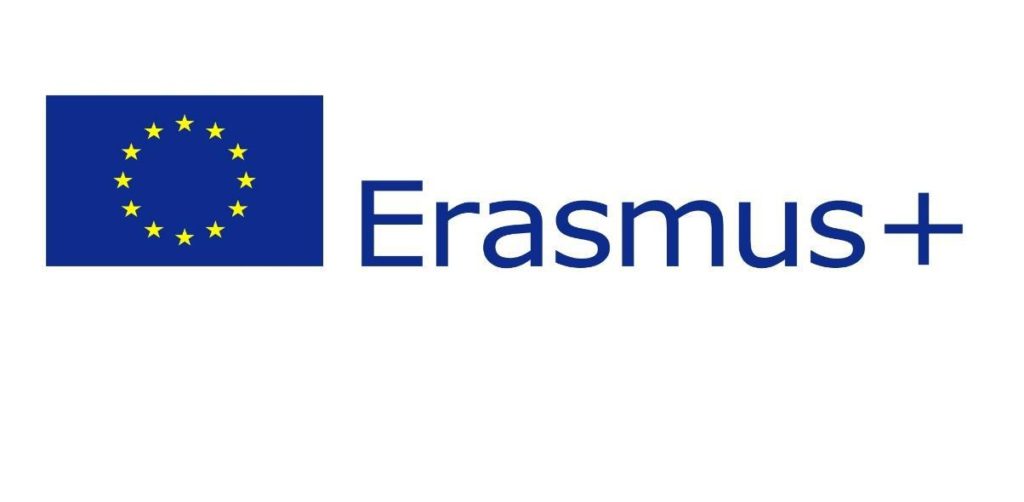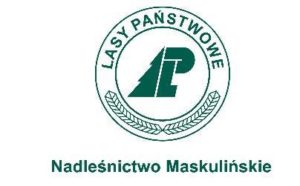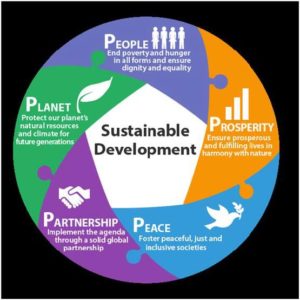Cooperation and education as keys to sustainable development






A few words about the project partners…
The Maskuliński Forest Inspectorate, headquartered in Ruciane-Nida, as a unit of State Forests, conducts multifunctional forest management, where each of the functions: social, economic and protective are of equal importance . Forestry, forest protection, nature protection, timber harvesting, seed and nursery production as well as forestry education are the main areas of activity of the forest inspectorate. In addition, since 2002, the forest inspectorate has been part of the promotional forest complex “Masurian Forests” and is one of the main centers for nature and forest education in our region. Important elements of our work are the forestry vocational education activities, which the forest inspectorate carries out on the basis of contracts and agreements with secondary and higher vocational schools.
The Union Forestry School Complex in Ruciane-Nida was created on the basis of the Technical School of the Wood Industry (1973). In 1980, a Faculty of Forestry was established. The school then took the name of Zespół Szkół Drzewnych i Leśnych. In the following years, the school underwent many organizational changes until 2004, when it was renamed Zespół Szkół Leśnych im. Unii Europejskiej (Union School for Forestry and Hunting), with forestry being the main vocational training option. Since 2010, new courses have been created: landscape architecture technician, computer technician, tourist services technician, forest machine operator, gardener. The school has also created the possibility of acquiring training in qualified professional courses: forestry technician, tourist service technician and computer technician. The school has a supraregional scope. It has specialized workshops in vocational subjects.
Forest Model of Provence – non-profit association created in 2013, brings together institutions and local territorial authorities, forestry associations, including the association of chestnut producers, forestry cooperatives, owners and managers, such as the National Center for Forest Property in the Provence Alpes Côte d’Azur (PACA) region. The partnership activities developed by Forest Model of Provence serve to promote the sustainable development of the forest areas of Provence. This status involves the following activities: at the local level – projects are implemented in the Maures, Sainte Baume, Etoile and Garlaban areas; at regional level – the results of activities carried out locally are disseminated and constitute a driving force for international activities, where the methods developed become a response to the challenges posed by the forest areas of the Provence region.
The “Mirna basin” model forest (Modelna suma “Sliv rijeke Mirne”) was established in 2013, and the founding members were non-governmental organizations, public institutions, cities, municipalities, private companies, as well as companies dealing with forests and rural areas. The activities of Modelna suma “Sliv rijeke Mirne” include the implementation of projects in the field of forestry, among others. Sustainability aspects are the common denominator of these activities. Since 2014, the association has participated in the communication network on forests and in the European group on forestry education. The association is involved in education for sustainable development and specializes in forestry education. The target groups of Modelna suma “Sliv rijeke Mirne” are kindergartens, schools, teachers and professionals in institutions dealing with forestry and natural resources.

Pictured are project partners during a meeting at the “Colored Forest” kindergarden in Nova Vas, Croatia.
And it started with the forests…
The idea of sustainability emerged in the early 18th century. A senior German official at the time, Hans Carl von Carlowitz, recognized the crisis of depletion of forest resources.
The modern understanding of the concept of sustainability was first presented in a work by the Saxon civil servant and thinker H.C. von Carlowitz entitled Sylvicultura economica, published in 1713. In this study, he put forward the need, even the necessity, of stand in German forestry. The surroundings of the Saxon mining towns, at that time a well-known silver mining basin, were intensively deforested due to the use of wood for mining and metallurgical purposes. The surrounding forests came under the axe, which quickly led to the disappearance of local tree stands. As a result, the raw material began to be imported from other parts of Germany, where the same problem arose in retrospect.
Calrowitz recognized the need for responsible forest management and therefore outlined standards for sustainability in timber harvesting. They have become the foundation of sustainable forestry, which involves cutting down as many trees as can be grown in a given location.
The concept of sustainability used in the past in the context of forest management described a management model to guarantee and ensure the regular income and long-term maintenance of forests. Sustainable and sustainable development was therefore not a passive and limiting activity, but an activity aimed at the concrete implementation of optimal and long-term forest management, the essence of which is to maintain in good condition a sufficient number of forest stands.
It’s the collective action that counts…
Over the years, the idea of sustainability has evolved.
1987 – UN Report “Our Common Future”.
In this document, the definition of sustainable development appears for the first time as follows: “…is development which ensures that the needs of present generations are met without compromising the possibilities for future generations to meet their needs. »
1992 – Earth Summit in Rio de Janeiro
The objective of this summit was to draw the attention of the international community to the fact that economic development leads to irreversible degradation of the environment. It has been noted that if concerted action is not taken, humanity will lead to the total destruction of our planet. Agenda 21, a global program of action outlining how to develop and implement sustainable development programs at the local level, was adopted.
2000 – United Nations Millennium Declaration
One of the most important UN documents, which guides what countries must do to make the world a better place in the 21st century. The declaration contains 8 millennium development goals. One of them talks about guaranteeing a state of ecological balance by fighting, among other things, against deforestation.
2002 – United Nations World Summit in Johannesburg
In response to global changes over the decade, actions have been proposed to improve living conditions and protect natural resources. Key areas have been identified where country actions need to be particularly effective (such as biodiversity protection).
2015 – UN Summit in New York
The 2030 Agenda for Sustainable Development was adopted, with 17 Sustainable Development Goals and 169 specific targets on issues such as eradicating poverty, tackling inequality and tackling climate change. The agenda has been endorsed by all 193 UN member states and is to be implemented over the next 15 years.
What is sustainable development ?
It is development that meets the needs of people today without preventing future generations from meeting their needs.
At the center of sustainable development we distinguish:
– Society – we are determined to eliminate
poverty and hunger
– Our planet – we want to protect the Earth from a deteriorating environment
– Prosperity – we want all people to have a decent income.
and a fulfilling life
– World Peace – we build peaceful and inclusive societies, free from fear and violence.
– Partnership – Mobilize the resources necessary for the implementation of the 2030 Agenda

Agenda 2030
The 2030 Agenda for Sustainable Development was adopted by 193 Member States of the United Nations at a summit held from 25 to 27 September 2015 in New York. It is a document that defines 17 goals for sustainable development and 169 targets.
The agenda is as follows:
Education and collaboration are key to building a better future for all.
Provide environmental education for sustainable development
The need to develop a foundation for education and public awareness in the spirit of sustainable development is currently seen as one of the most important and urgent tasks facing educators.
Among the directives in the field of educational activities, the education of society, including children and young people, deserves a prominent place. This pillar constitutes an important social capital. It is therefore necessary to build educational systems and programs in such a way that – by adapting them to the needs and developmental capacities of children – they are educated and formed into conscious and responsible citizens, guided by the principles of development. sustainable, based on the consciousness of future generations.
Teaching steps dedicated to environmental awareness
1) Enjoy the outdoors
It is about developing sensitivity, positive impressions and an open and positive attitude towards the environment. This stage contributes most strongly to initiating a change in attitude towards outdoor activities, by arousing an interest in nature and the processes that take place there.
2) Experiment and observation
It allows you to know the fauna and flora (plant species, animals) to a large extent, the activities carried out in the field intensify your personal attitude to the issues addressed. The knowledge acquired will serve as a basis for reflection and the adoption of desirable attitudes.
3) Understanding relationships in nature
The interaction of plants, learning and understanding the relationships between different species within different ecosystems, leads to a broader understanding of nature’s processes.
4) Relationship between man and nature
The interdependence between forest and people is of paramount importance in understanding potential conflicts. The concept of balance between social, cultural, ecological and economic functions.
5) Green Choices
With knowledge, you can develop your own perspective, which helps you make informed decisions and choose alternative actions.
6) Responsibility for the future
Understand what sustainability is and what influence we have in it. People, individually and as a group, are responsible for their actions. Based on this knowledge, they can make reasoned decisions leading to sustainable lifestyles. Responsibility for the future, attitudes that influence consumers and decision makers to make better choices.
The different stages can be repeated several times, allowing you to slowly gain more experience each time and broaden knowledge and horizons.
Gain experience as a partner….
First training visit.
We hosted partners from France in the Provence region to exchange knowledge and experiences:
- methods of promoting hunting management and educating the public of different age groups;
- forestry education activities carried out in the form of workshops in the reserve areas;
- ecotourism methods based on forest resources and the theme of promoting wood, in particular through the presentation of works of art inspired by nature;
- knowledge of forest management in the context of the possibility of harvesting cork oak bark;
- observation of management methods in a private forest where the priority is to increase biodiversity through public funding.
Project partners during a training visit to France
Second training visit.
The meeting took place in Poland, at the Maskulin forestry division and at the Ruciane-Nida forestry school complex. Our partners :
- were introduced to the history, resources and multifunctional management of Polish state forests;
- deepened their knowledge of biodiversity – reintroduction of the lynx, protection areas for birds including the osprey, protection of the pond turtle;
- discovered the most important functions of a forest such as:
o protection – water, soil, landscape;
o economic – sustainable use of wood and preservation of the continuity of stands, accessory use of the forest, management of hunting;
o the social aspect – they learned about the functioning of the promotional forest complex “Forests of Masuria”, the forest education center “Wojciechówka”. Project partners also had the opportunity to learn about the operation of tourist facilities in state forests on the example of the Maskulińskie Forest District. They also presented projects implemented to raise public awareness of sustainable development (a project to promote wood as an excellent raw material), and provided knowledge on nature and forestry education for children. , youth and adults;
• project participants also got acquainted with examples of cooperation between institutions in our region for the development of environmental awareness in society;
• visited the Forestry School complex, where we showed how the school perceives and implements the Sustainable Development Goals and what theoretical and practical forestry education looks like.
Symbol of the Erasmus+ project “Cooperation and education as a key to sustainable development”.
At the meeting in Poland, a symbol of the idea of sustainable development and environmental protection was created in a tangible form: we planted a forest orchard near the headquarters of the Maskulin forest district. All members of the project, together with a representative of local authorities and students of the forest school complex, planted species of trees and bushes of plants naturally present in Polish forests: mountain ash, plum, sea buckthorn, juniper, dogwood , elderberry, raspberry, blackberry, blackcurrant, hawthorn, blueberry, bird cherry and traditional varieties of apple and pear trees. The fruits of the above species will eventually be available to the local community. In addition, as part of education aimed at supporting the principles of sustainable development and spreading the idea of multifunctional forest management, the site will be visited by students from local schools as part of their lessons and school practice.
Third meeting.
The penultimate training visit organized by Istrian Model Forest was held in the city of Groznjan, Croatia. Each partner made a presentation of their achievements in the field:
– “Environmental and forestry education” – Istrian Model Forest (Croatia);
– “Forest education activities” – Maskulin Forest District (Poland);
– “Environmental and forestry education workshop” – Model Forest of Provence (France);
– “Innovative practices in forestry education” – Ruciane-Nida Forestry School (Poland).
During the visit to Croatia, the partners gained knowledge and experience in the following areas:
• Forest management and restoration practices in lowland indigenous Mediterranean forests through the example of the Motovun forest in the Mirna river basin,
• breeding, harvesting and processing of truffles (Zigante truffle field) as an example of the use of natural potential in the economic development of the region,
• management of a forest kindergarten, which is unique in Poland and Croatia: it is an alternative way of organizing an educational stay in and in nature. The idea of this establishment is to combine art, interpersonal relations, relaxation, learning about the world while respecting the environment,
• self-sufficiency in agrotourism using local natural resources, taking the example of the Kocjancic family farm, known for the production of natural products from local resources,
The organization of workshops following the example of the association for the promotion of outdoor education Dijade in Tar. This organization organizes creative, scientific and scouting workshops in the field.
Fourth meeting – final.
The last training visit to close the project took place in the forest district of Maskulin in Poland. During the conference, our partners from Croatia, France and the Ruciane-Nida forest school complex shared their observations and conclusions on the meetings organized and discussed the implementation of various forms of education and cooperation for sustainable development in their own communities.
Find all the activities related to education in the final document:
Cooperation and education as keys to sustainable development – outcome document
